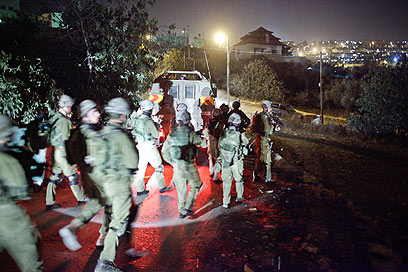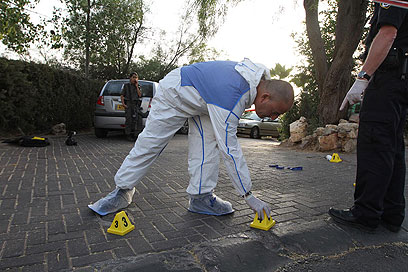‘Shalit Deal Led to Stabbing Attack’
On heels of terror attack in Ramot neighborhood, security establishment to discuss budget for security fence between Palestinian village of Kfar Iksa, Israel. ‘Publicity surrounding prisoner swap turned murderers into culture heroes on Palestinian street,’ says head of Almagor Terror Victims Association
Ynet
2011-10-23
A day after a stabbing attack that severely injured 17-year-old Yehuda Ne’emad, residents of the Jerusalem neighborhood of Ramot, where the incident took place, recalled a series of burglaries perpetrated by Palestinians from the village of Kfar Iksa, where the attacker is believed to have fled.
“They walk around the neighborhood uninterrupted,” said one of the residents.
Meir Indor, head of the Almagor Terror Victims Association, blamed the government for the incident, claiming that the release of prisoners as part of the Shalit swap deal led to the stabbing attack.
“The publicity surrounding the deal turned murderers into culture heroes on the Arab and Palestinian street. Their acts are being praised and their release is attributed to Hamas’ determination against Israel.

Security forces in search for suspect (Photo: Noam Moskovich)
“All this encourages Arab youths to try impersonating the released prisoners, because they know, just as we know, that if they are caught they will be released sooner or later,” he said.
Meanwhile, Ne’emad condition, which was initially considered serious, has improved. The youth underwent surgery in Hadassah Medical Center and he is now considered moderate yet stable condition.
“I never thought it would be dangerous to let my child go out on our street,” Ne’emad’s mother told Ynet on Saturday.
Free Access to Israel
In the upcoming weeks, the Defense Ministry is set to discuss the approval of a budget for a security fence between the village and Jerusalem. The construction is expected to begin in 2012.

Scene of stabbing attack (Photo: Gil Yohanan)
Police and army forces continued searching for the stabbing attack suspect late Saturday night. The forces arrived at Kfar Iksa, which is located west of Jerusalem in area B (under Palestinian civil control and Israeli security control), and searched the homes in the village, where the suspect is believed to be hiding.
A joint army and police operations center was set up on the outskirts of the village to coordinate the manhunt.
Defense establishment officials estimate that the terrorist exploited the fact that the security fence, which divides Israeli and Palestinian territories, does not extend to Kfar Iksa, which is located less than half a kilometer from Ramot. The attacker could have slipped in and out of the neighborhood unimpeded.
The village is in fact cut off from other villages in the north and the west by a temporary security fence that was built until a permanent one is erected instead.
A security official told Ynet that “so far, the Defense Ministry completed 525km out of the 670km security fence planned in the West Bank area. The construction of the fence in Kfar Iksa is part of our perennial work plan.”